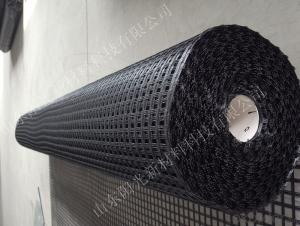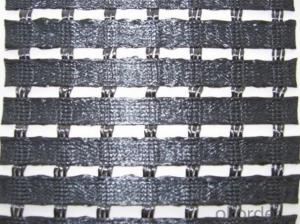Fiberglass Geogrids for Road Reinforcement
- Loading Port:
- Qingdao
- Payment Terms:
- TT or LC
- Min Order Qty:
- 10000 m²
- Supply Capability:
- 100000 m²/month
OKorder Service Pledge
OKorder Financial Service
You Might Also Like
Fiberglass Geogrid Introduction
Fiberglass geogrid is a kind of new favorable earthwork base material to strengthen the road surface and roadbed. This product is made by weaving and covering fiberglass filament. It is featured by high vertical and horizontal tensile strength, low unit extension, high flexibility, and favorable high and low temperature resistance. The products after surface covering own the favorable property of alkali resistance and aging resistance
Fiberglass Geogrid Features :
1. Fiberglass geogrid for soil reinforcement
2. Pavement subgrade stabilization
3. Area /Ground stabilization
4. Pavement base reinforcement
5. Working & load transfer platforms
6. Rail Track-bed stabilization
7. Reinforced granular foundation beds
Fiberglass Geogrid Specification:
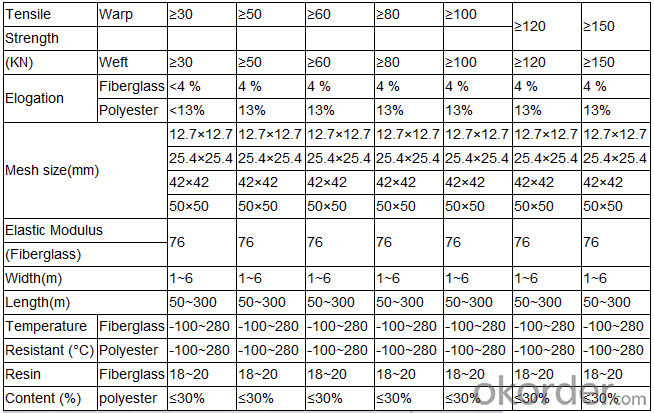
FAQ:
Q: What kind of payments does jenor support?
A: T/T, L/C, Cash are accepted.
Q: Do you charge for the samples?
A: Accordeing to our company policy, the samples are freee, we only charge the freight fee. And we will return the freight fee during the next order.
Q: Can you produce according to customers' design?
A: Sure, we are professional manufacturer, OEM and ODM are both welcome.
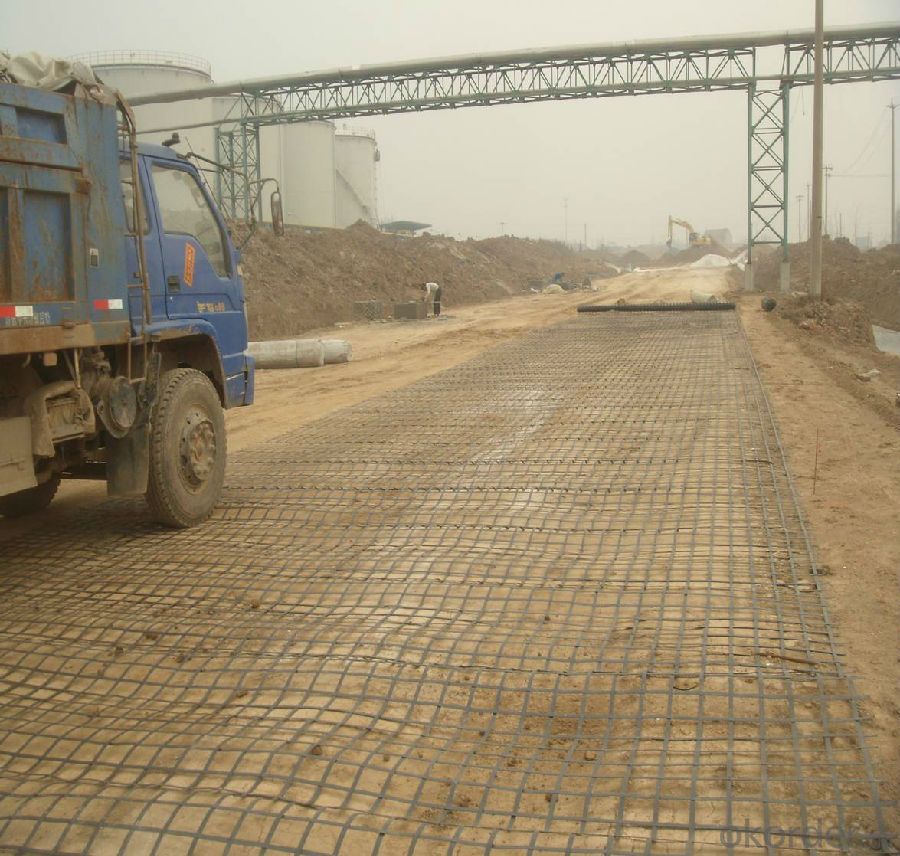
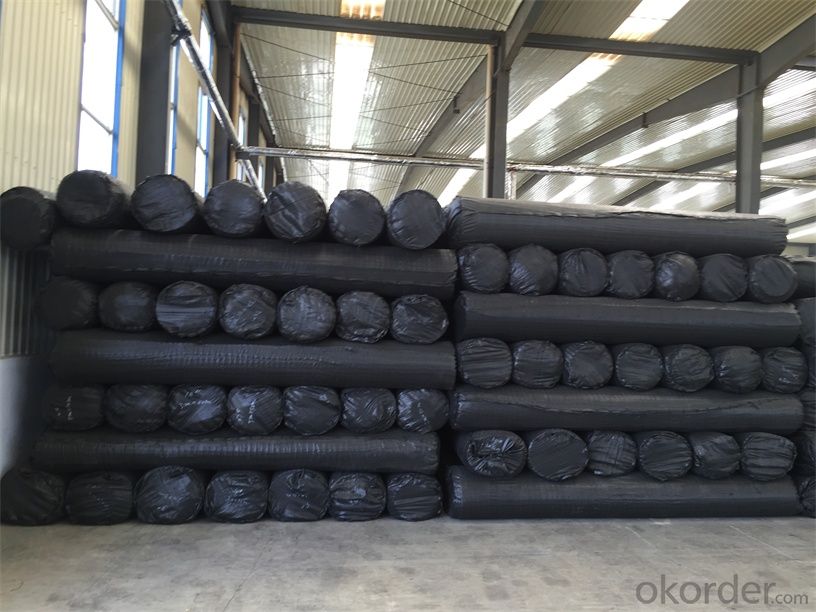
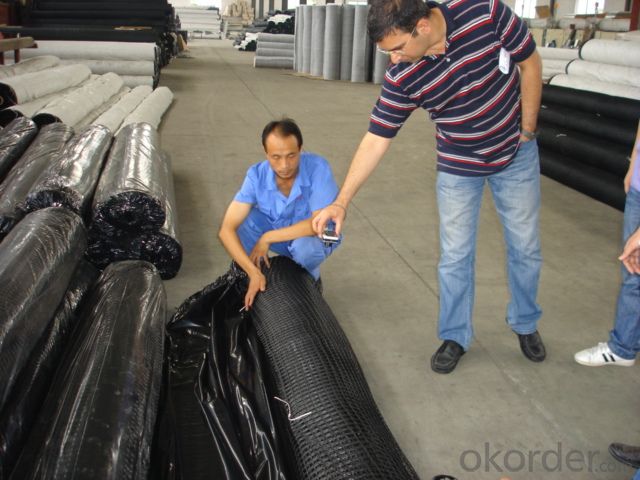
- Q:What are the types of Geogrid
- There are many types of geogrid is about tgsg / convex node tgsg / whole tgsg / glass fiber geogrid
- Q:What is the width of glass fiber grating 100cm
- Glass fiber reinforced plastic (FRP) grid is a kind of board material with a lot of space, which is made of glass fiber as reinforcing material and unsaturated polyester resin as matrix.
- Q:Are geogrids suitable for use in soil reinforcement for wind turbine foundations?
- Yes, geogrids are suitable for use in soil reinforcement for wind turbine foundations. Geogrids can provide increased stability and load-bearing capacity to the soil, helping to prevent soil erosion and movement caused by wind loads. Additionally, they can improve the overall performance and longevity of the foundation by reducing settlement and maintaining the integrity of the structure.
- Q:What are the differences between geogrids and geocomposites?
- Geogrids and geocomposites are both used in soil stabilization and reinforcement applications, but they have some key differences. Geogrids are typically made from high-strength polymers or fiberglass, and they have a grid-like structure with open spaces. They are designed to provide tensile strength and distribute loads across a wider area. Geogrids are mainly used for reinforcing soils, retaining walls, and roadways. On the other hand, geocomposites are multi-layered materials that combine different geosynthetic components. They usually consist of a geotextile fabric or membrane bonded to a geogrid or geonet layer. Geocomposites offer a combination of functions such as filtration, drainage, separation, and reinforcement. They are commonly used in applications like erosion control, landfill engineering, and drainage systems. In summary, while geogrids focus on reinforcement and load distribution, geocomposites offer a more versatile solution by combining multiple functions in a single product.
- Q:Can geogrids be used in erosion control on slopes and hillsides?
- Yes, geogrids can be used in erosion control on slopes and hillsides. Geogrids are widely used for reinforcement and stabilization purposes in such areas to prevent soil erosion and retain the stability of the slope or hillside. They provide additional support to the soil, reducing the risk of landslides and erosion by improving the structural integrity of the slope.
- Q:Are geogrids effective in erosion control?
- Yes, geogrids are effective in erosion control. They provide stability and reinforcement to soil, preventing erosion by holding the soil in place and reducing the movement of sediments. Geogrids also improve the load-bearing capacity of the soil, making them suitable for various erosion control applications such as retaining walls, slopes, and embankments.
- Q:Are geogrids suitable for use in slope stabilization for mining haul roads?
- Yes, geogrids are suitable for use in slope stabilization for mining haul roads. Geogrids are engineered materials that provide reinforcement and stability to soil, improving its load-bearing capacity. They are commonly used in various applications, including slope stabilization, to prevent soil erosion and maintain the integrity of the road. By distributing the load more evenly and reducing the potential for soil movement, geogrids enhance the safety and durability of mining haul roads.
- Q:What is the typical geogrid roll weight for specific applications?
- The typical geogrid roll weight for specific applications can vary depending on factors such as the type of geogrid, the intended use, and the desired strength requirements. However, geogrid rolls commonly range from 50 to 150 pounds for standard applications.
- Q:Can geogrids be used in shoreline protection projects?
- Yes, geogrids can be used in shoreline protection projects. Geogrids are often used to reinforce soil and prevent erosion in various applications, including shoreline protection. By providing additional strength and stability to the soil, geogrids can help to prevent the erosion of the shoreline and protect it from the damaging effects of waves and currents.
- Q:How do geogrids help in reducing the carbon footprint of a project?
- Geogrids help in reducing the carbon footprint of a project by providing reinforcement to soil, thereby reducing the need for excessive excavation and the use of concrete or other materials. This leads to a significant reduction in carbon emissions associated with production, transportation, and installation of such materials. Additionally, geogrids can enhance the stability and longevity of structures, reducing the need for maintenance and replacement, which further contributes to the reduction in carbon footprint.
1. Manufacturer Overview |
|
|---|---|
| Location | |
| Year Established | |
| Annual Output Value | |
| Main Markets | |
| Company Certifications | |
2. Manufacturer Certificates |
|
|---|---|
| a) Certification Name | |
| Range | |
| Reference | |
| Validity Period | |
3. Manufacturer Capability |
|
|---|---|
| a)Trade Capacity | |
| Nearest Port | |
| Export Percentage | |
| No.of Employees in Trade Department | |
| Language Spoken: | |
| b)Factory Information | |
| Factory Size: | |
| No. of Production Lines | |
| Contract Manufacturing | |
| Product Price Range | |
Send your message to us
Fiberglass Geogrids for Road Reinforcement
- Loading Port:
- Qingdao
- Payment Terms:
- TT or LC
- Min Order Qty:
- 10000 m²
- Supply Capability:
- 100000 m²/month
OKorder Service Pledge
OKorder Financial Service
Similar products
New products
Hot products
Hot Searches
Related keywords

